
Feel free to add tags, names, dates or anything you are looking for
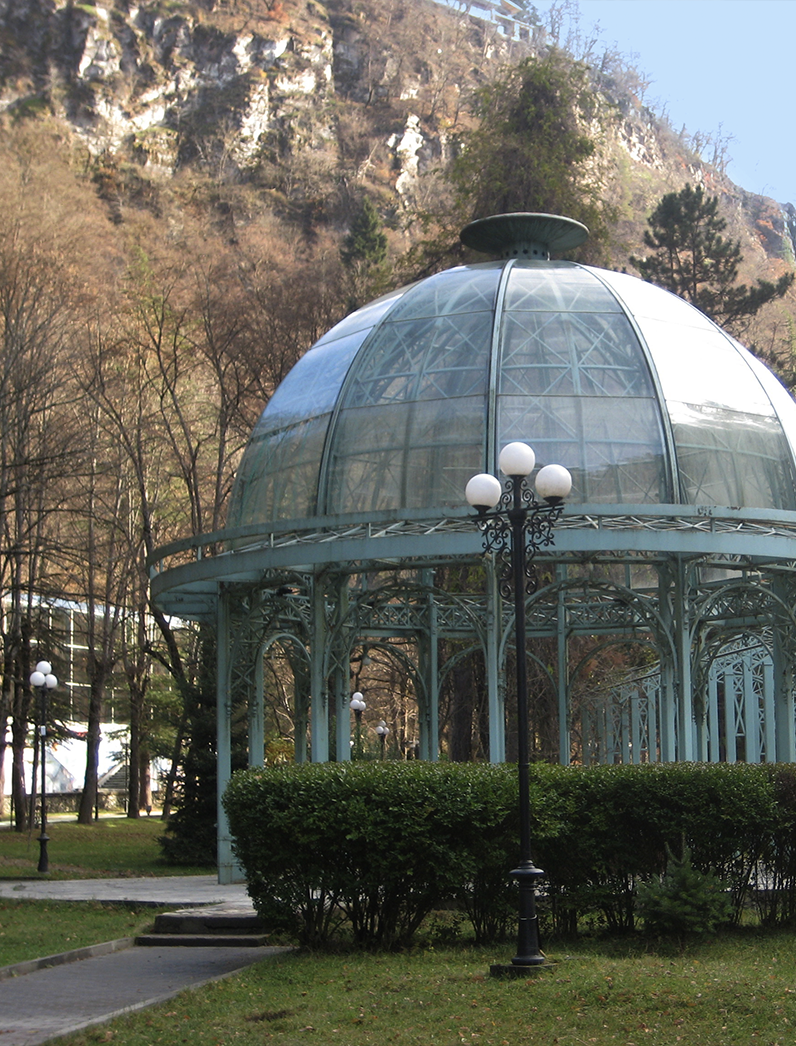
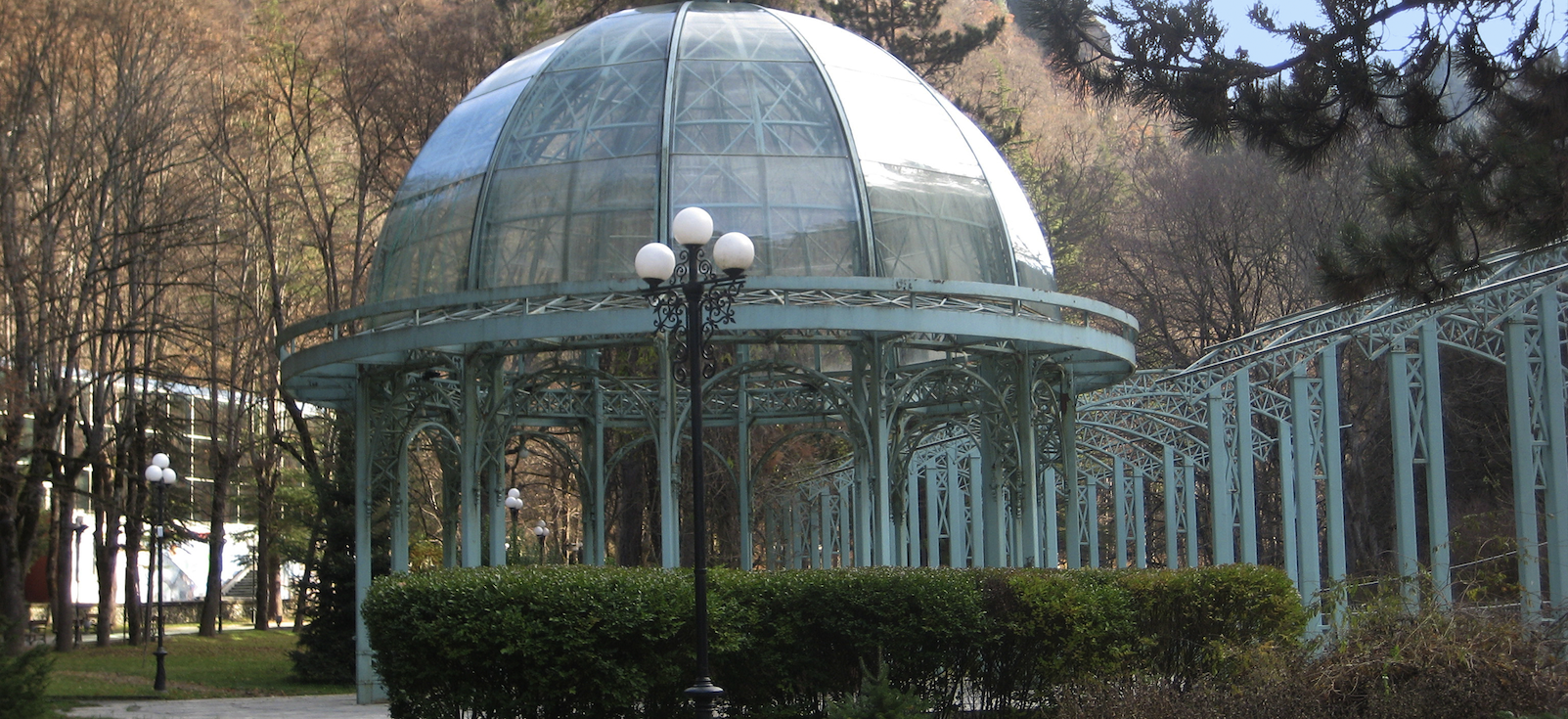
Borjomi Central Park, formerly known as Mineral Waters Park, is situated in the narrow gorge of the Shavtskala (Borjomula) River. Its history is closely tied to that of the Borjomi spa itself.
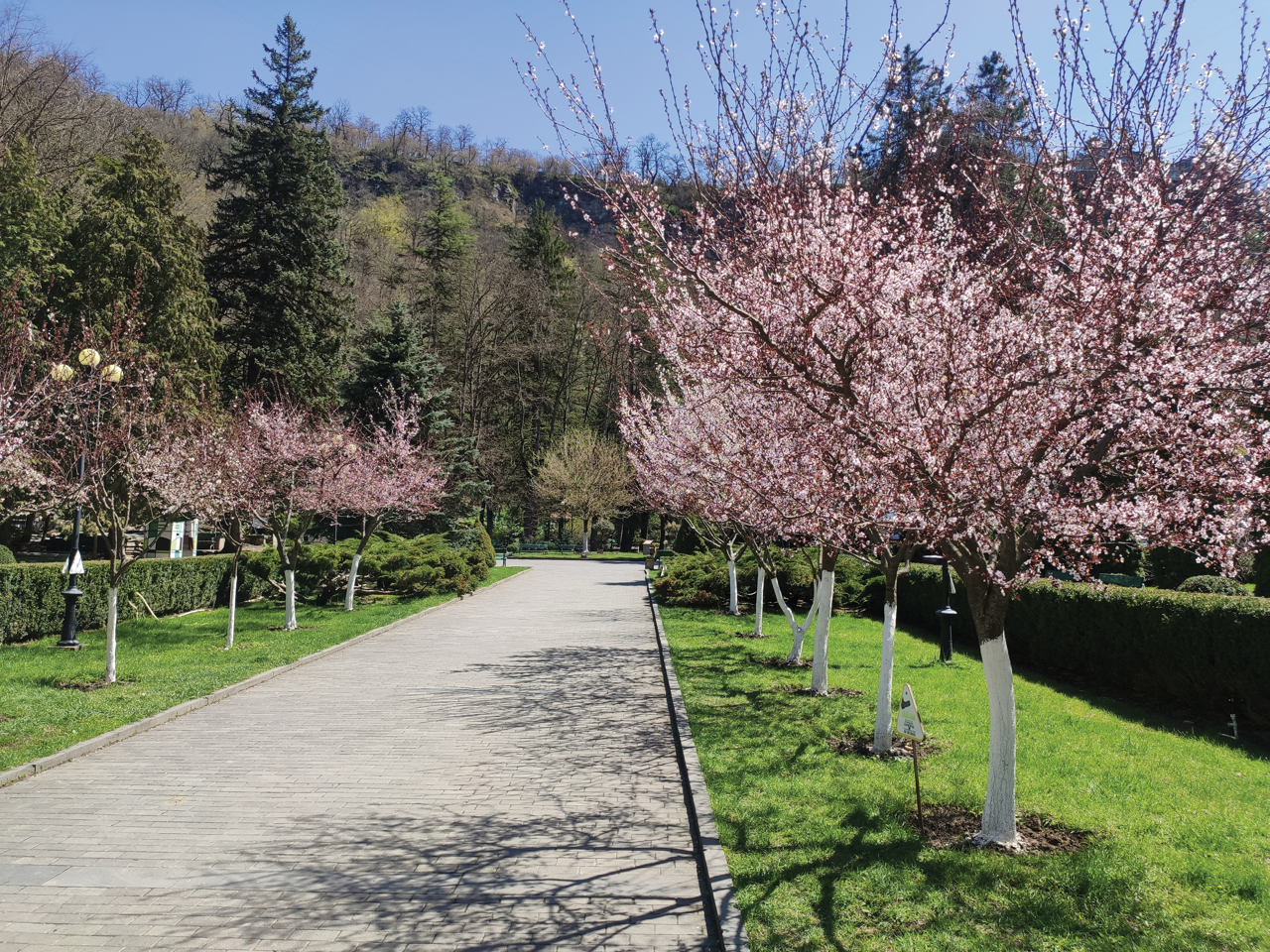
Tree-lined path near the entrance of the park
The spa and park were established in 1842, when the Governor of the Caucasus, Evgeni Golovin, undertook the first steps to improve the mineral springs. Significant contributions to the park's development were later made by Viceroy Micheil Vorontsov, who implemented several projects, among them roofing the springs, encasing them in stone, and constructing embankments and bridges along the river.
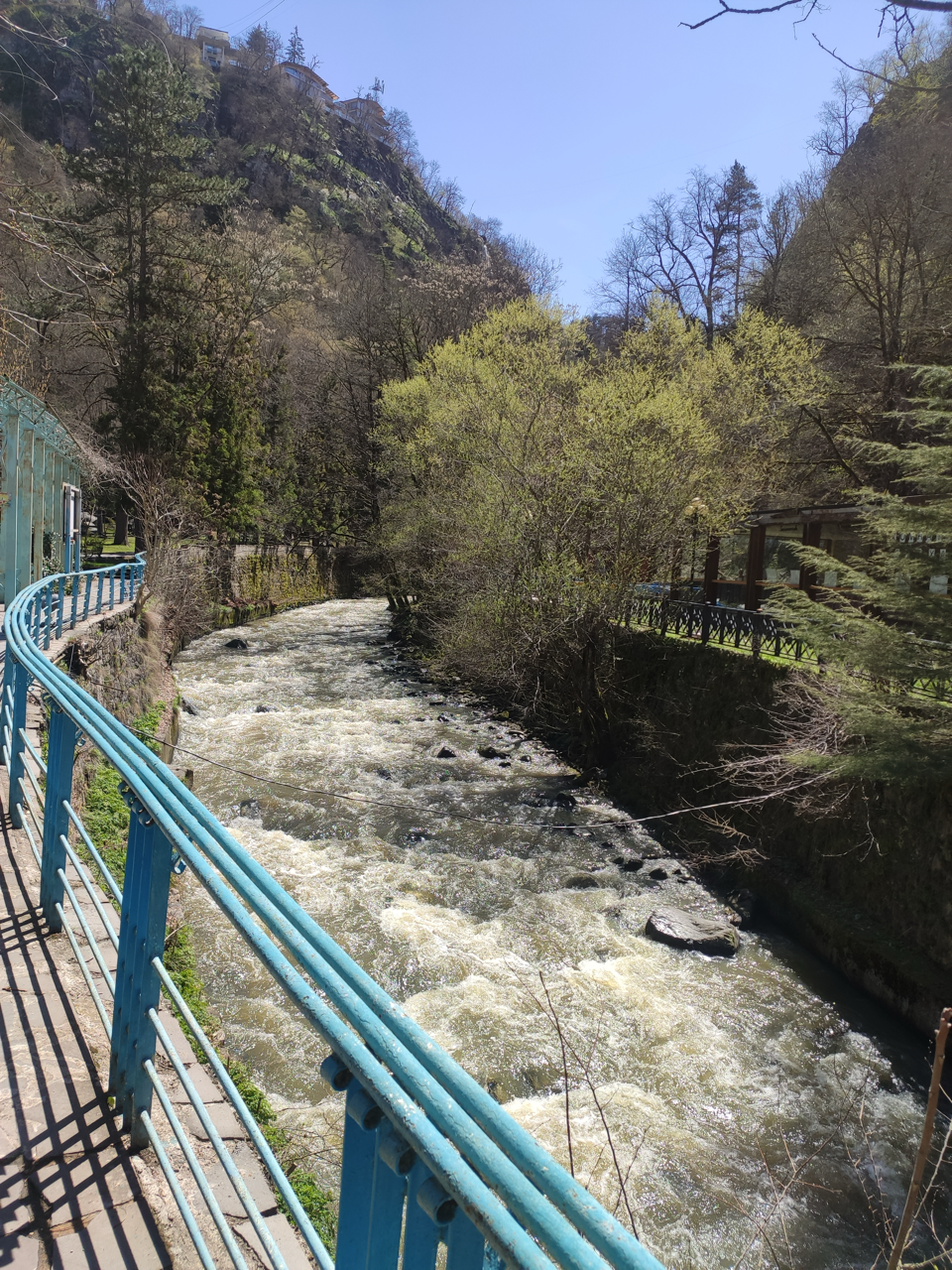
Shavtskala (Borjomula) River in the park
The landscape played a defining role in the design of Borjomi Park. The park stretches linearly along the river, constrained by the steep, rocky slopes of the surrounding mountains. The main mineral spring, known in the nineteenth century as “Ekaterina’s Spring” and in the Soviet era as “Spring No.1,” emerges in the lower part of the park. It is housed beneath a round, open, metal pavilion with a glass dome.
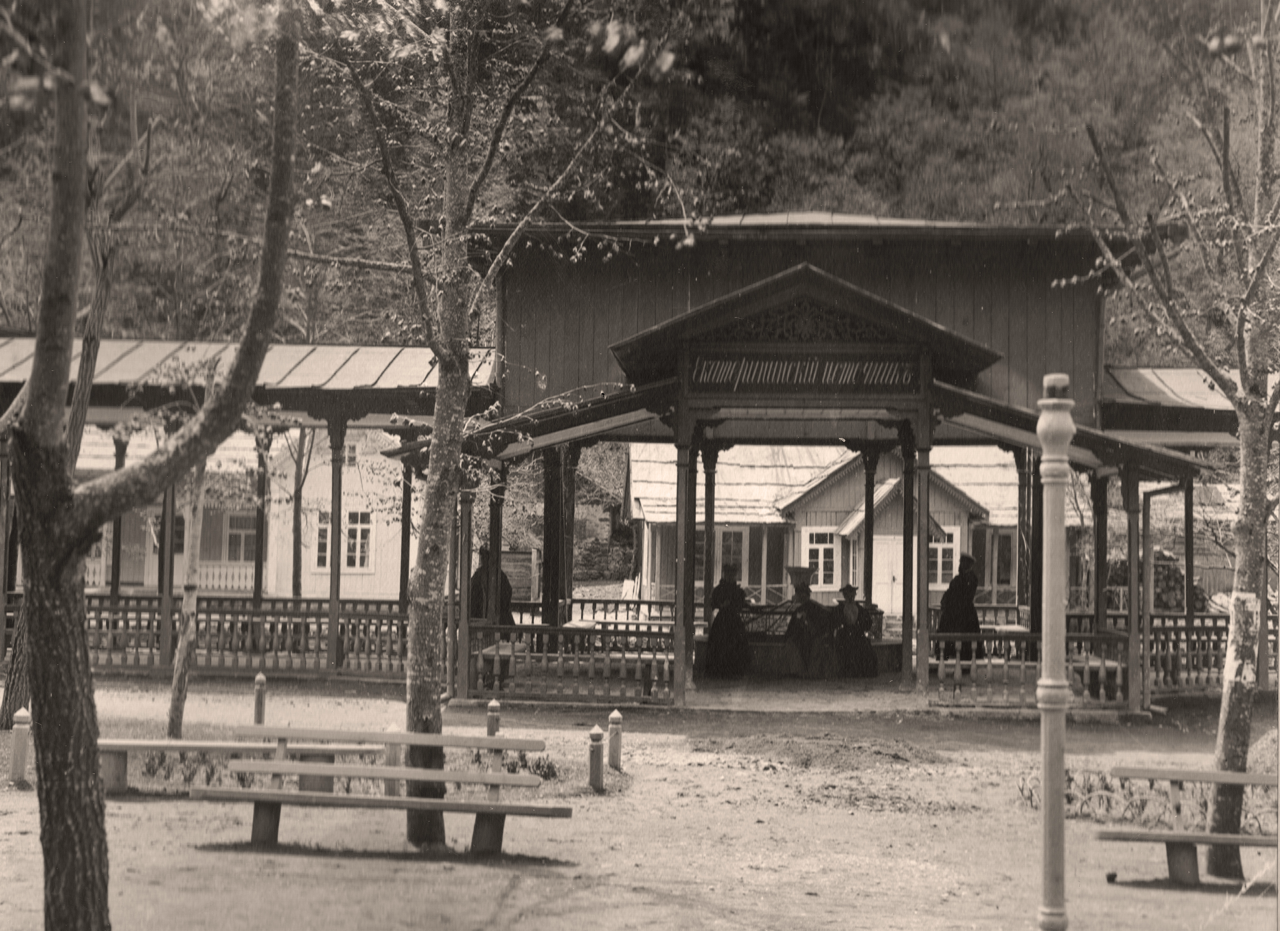
Ekaterina’s Spring, 1890
Originally, the mineral waters were used primarily for bathing purposes. It wasn’t until the late 19th century that Borjomi water gained popularity as a drinking source. Consequently, areas around the springs that had been occupied by bathing establishments were demolished during the Soviet era.
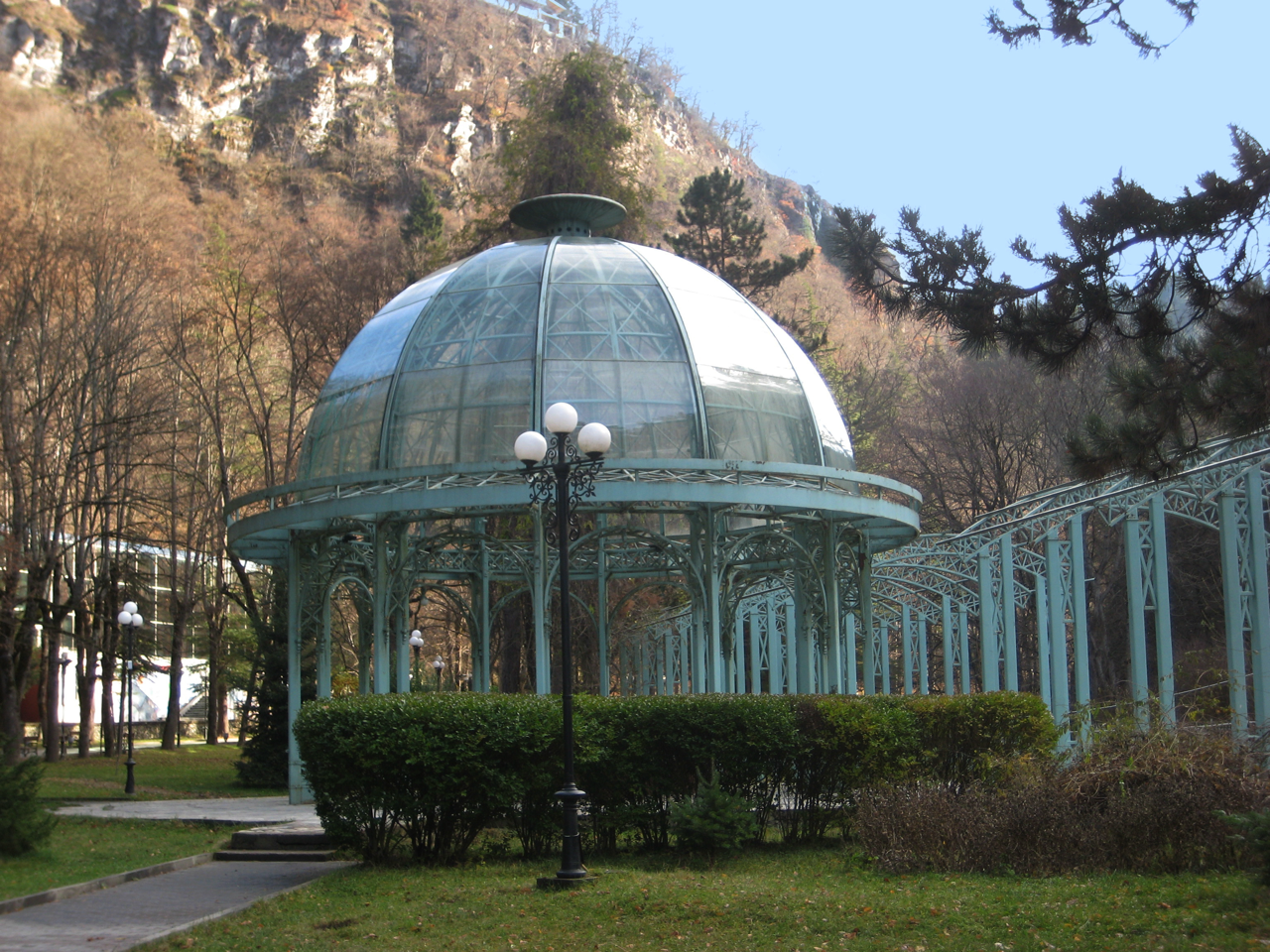
The main spring today
Two surviving buildings in the park are notable examples of the location’s industrial heritage, and are of particular historical interest. Both were designed and equipped by Friedrich Moldenhauer, an engineer who was instrumental in bringing technological innovations to Borjomi.
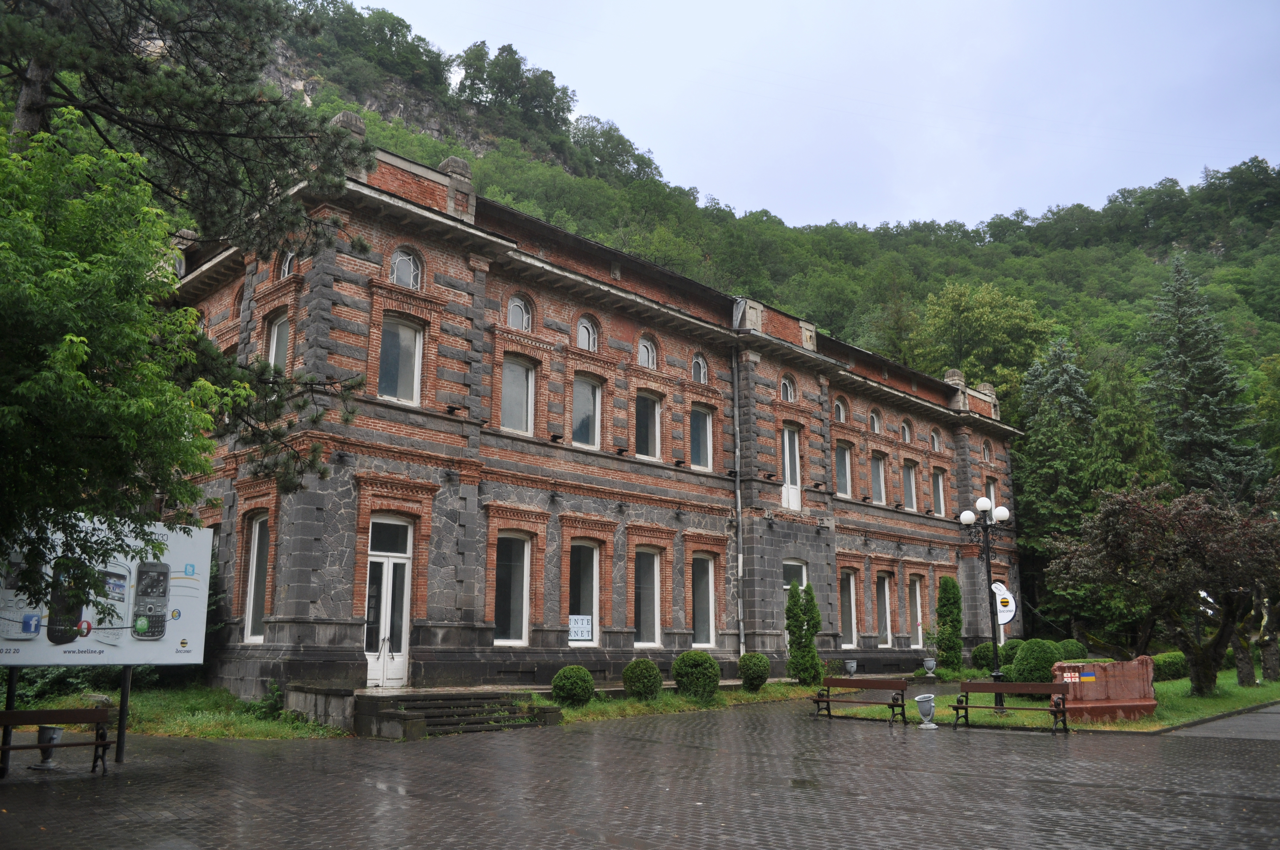
The former mineral water bottling factory
The former mineral water bottling factory, constructed between 1895 and 1896 to the left of the park entrance, is a two-storey structure with exterior masonry consisting of alternating bands of grey stone and brick. The main façade, which faces the park, features three projecting sections, each with an entrance on the ground floor. One of the springs used for bottling water was located within the factory. In 1954, production was relocated, and the building was repurposed as a cultural venue.
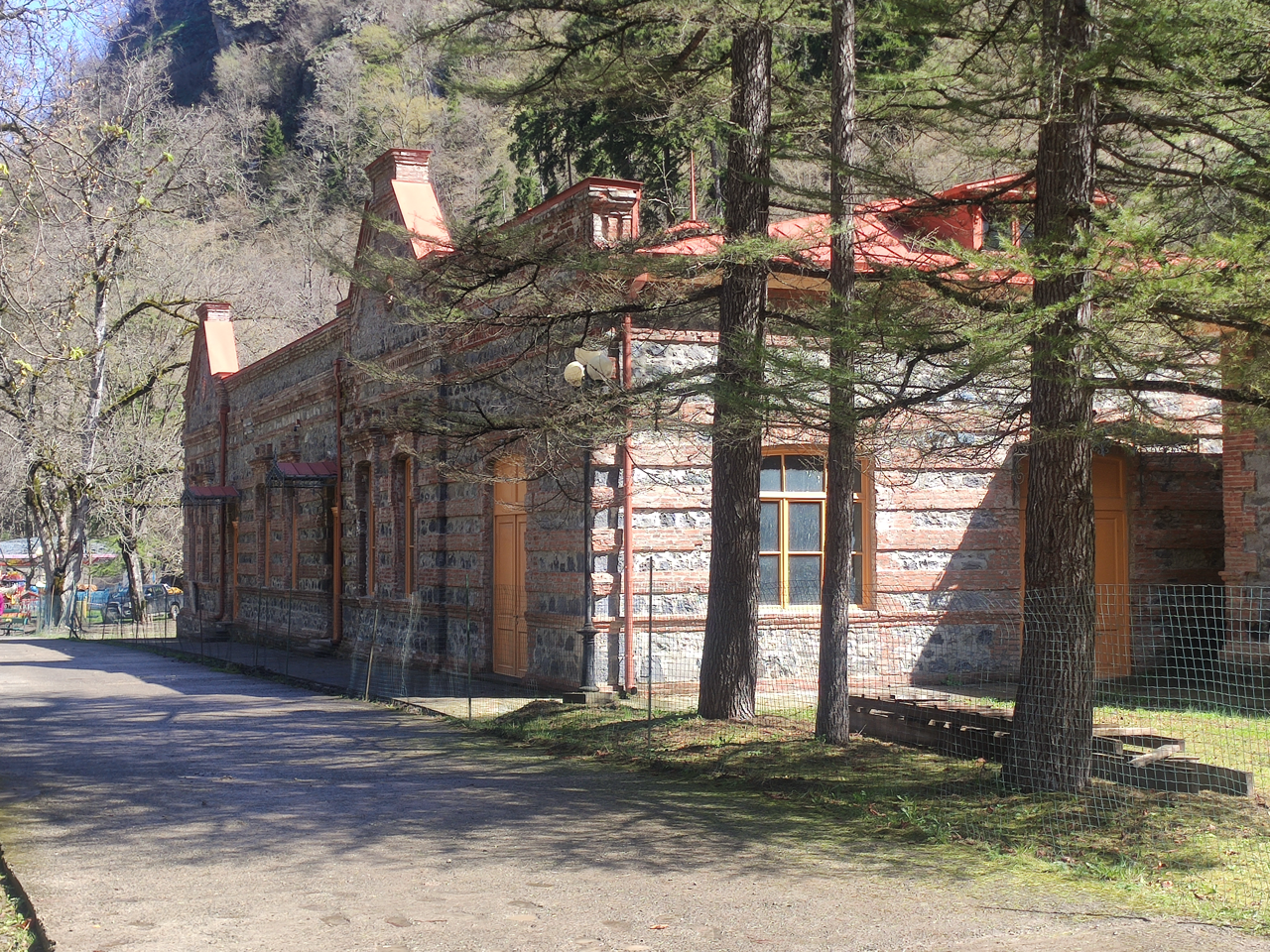
The former hydroelectric power station
Towards the rear of the park is the former hydroelectric power station. Dating back to 1899, it was the first electric power plant in the South Caucasus. The one-storey building has a front façade topped with a parapet and two trapezoidal gables. Inside, it originally housed two rooms containing water engines and electrical equipment. For many decades, the station provided electricity to Borjomi. However, in the 1950s, the city was connected to Georgia’s centralized power grid, and the old station became defunct. Though looted and heavily damaged in the civil strife of the 1990s, rehabilitation works carried out between 2020 and 2023 have since restored the building’s original exterior.